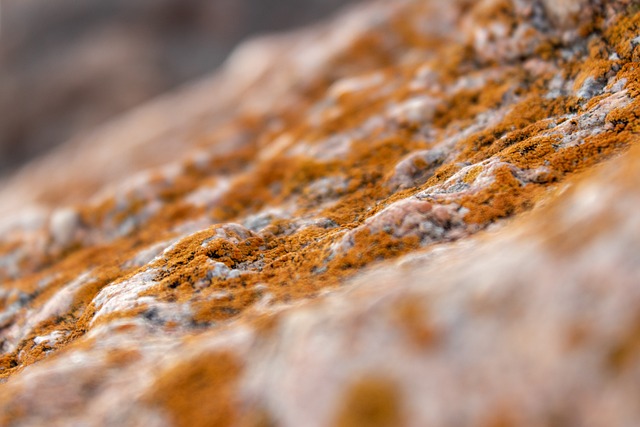Grout sealing is crucial for protecting tile work in humid spaces like bathrooms and kitchens, preventing mold, mildew, and stains by creating a protective barrier. This cost-effective method fills grout gaps, repels water, and simplifies cleaning, enhancing the longevity of tiles. Choosing the right sealant for your grout type is key to achieving a fresh, clean look that wards off unsightly growth. Regular sealing maintains aesthetics and functionality, reducing the need for costly repairs or replacements.
Grout sealing is a crucial service that transforms your tile work, preventing mold growth and stain intrusion. In this comprehensive guide, we explore the basics of grout sealing, its vital role in maintaining hygiene and aesthetics, and how it acts as a protective shield against unsightly stains. Discover the benefits of professional services, learn to choose the right sealant, understand the application process, and ensure optimal results with proper maintenance, making your tiled spaces vibrant and lasting.
Understanding Grout Sealing: The Basics

Grout sealing is a crucial process designed to protect your grout lines from becoming a haven for mold, mildew, and stains. It involves applying a protective coating or sealant to the grout, filling in the tiny gaps where moisture can accumulate and create breeding grounds for unsightly growth. By sealing the grout, you create a smooth, non-porous surface that prevents these issues from taking root.
This method is particularly essential in areas prone to high humidity, such as bathrooms and kitchens, where grout naturally retains moisture. Sealing helps maintain the aesthetic appeal of your tiles and prevents the need for frequent cleaning and costly repairs caused by mold or mildew damage. It’s a cost-effective solution that enhances the longevity of your tile work and ensures a fresh, clean look for years to come.
The Role of Grout Sealing in Preventing Mold Growth

Grout sealing plays a crucial role in preventing mold growth, which is a significant concern in many homes and commercial spaces. By applying a protective layer to grout lines, sealing services create an impenetrable barrier against moisture and organic compounds that fuel mold development. Mold thrives in dark, damp environments with poor ventilation—precisely the conditions often found between tiles where grout is present. Regular cleaning may not be enough to address these hidden areas, making grout sealing an essential step in maintaining a healthy and aesthetically pleasing space.
When left unchecked, mold can cause a range of issues, from unsightly stains to structural damage over time. Sealing services not only safeguard against this but also make maintenance easier. A sealed grout line repels water, preventing it from seeping into the tile joints, thus reducing the risk of mold and mildew formation. This simple yet effective method is particularly beneficial for high-moisture areas like bathrooms and kitchens, ensuring that your space remains fresh and clean without constant effort.
How Grout Sealing Protects Against Stains

Grout sealing is a crucial step in maintaining the cleanliness and aesthetics of your tiled spaces. By applying a protective layer over grout lines, it acts as a barrier against various stains and contaminants. Grout, being porous in nature, can easily absorb liquid spills, leading to unsightly stains and even mold growth over time. This is where grout sealing comes into play.
The sealing process involves using specialized products that fill the pores of the grout, preventing liquids from penetrating. A sealed grout surface repels water-based stains, making it easier to clean and maintain. It also inhibits the growth of mold and bacteria, which can thrive in damp, porous environments. Thus, regular grout sealing not only enhances the visual appeal of tiled areas but also ensures long-term protection against stains and related issues.
Benefits of Professional Grout Sealing Services

Professional grout sealing services offer a multitude of benefits that go beyond aesthetics. One of the most significant advantages is the prevention of mold and stains. Grout, especially in high-moisture areas like bathrooms and kitchens, can become a breeding ground for mold if not properly sealed. Over time, this can lead to unsightly discolouration and even health issues for occupants. Professional sealing creates a protective barrier that blocks out moisture, preventing the growth of mold and the accumulation of stains caused by dirt, grease, and other contaminants.
Moreover, grout sealing enhances the longevity of your tile work. Unsealed grout can absorb water, causing tiles to become loose or damaged over time. Sealing protects the grout lines, making them easier to clean and maintaining the overall integrity of your tiled surfaces. This not only saves you from costly repairs but also ensures your space remains vibrant and inviting for years to come.
Choosing the Right Sealant for Your Grout

When it comes to grout sealing, selecting the appropriate sealant is paramount for maintaining a clean and healthy environment. The primary goal of grout sealing is to prevent mold and stains from forming in your tiles’ crevices. Different sealants offer varying levels of protection against water, oil, and other contaminants. For kitchens and bathrooms, where moisture levels are high, opt for sealants designed to resist water penetration. Silicone-based sealants are popular choices due to their flexibility and durability in humid spaces.
Additionally, consider the type of grout you have—ceramic, porcelain, or natural stone—as some sealants work better with specific materials. Natural stone, for instance, may require a sealant that protects its unique characteristics without causing discoloration. Always check the product’s compatibility with your grout and ensure it provides long-lasting protection against mold, mildew, and stains, thereby enhancing the aesthetics and longevity of your tiled surfaces.
The Application Process: What to Expect

When it comes to grout sealing services, understanding the application process is key to achieving a fresh, clean look in your space. The first step involves preparing the surface by thoroughly cleaning and drying the grout areas. This ensures that any existing mold or dirt is eliminated, providing a clean canvas for the sealant to adhere properly. Once the grout is ready, a professional will apply the sealant using a brush or sprayer, depending on the product and coverage requirements.
The sealant is designed to penetrate the grout lines, filling them to prevent water and moisture from seeping in, which is a primary cause of mold and stain formation. This protective barrier not only enhances the aesthetic appeal but also prolongs the life of your grout, keeping it looking as good as new for years to come. After application, the sealant may take a few hours to dry completely, during which time the treated areas should be avoided to ensure optimal curing.
Maintenance and Longevity: Ensuring Optimal Results

Proper grout sealing is a crucial step in maintaining the longevity and aesthetic appeal of your tiled surfaces. By sealing the grout, you create a protective barrier that prevents mold, mildew, and stains from infiltrating and damaging the tiny gaps between tiles. This is especially important in high-moisture areas like bathrooms and kitchens, where water can easily become trapped, leading to unsightly stains and even structural damage over time.
Regular maintenance of sealed grout includes routine cleaning and reapplication of the sealant as needed. With proper care, grout sealing can last for several years, providing optimal results in preventing mold and stains. This not only conserves the look and value of your tiles but also reduces the risk of costly repairs or replacements.
